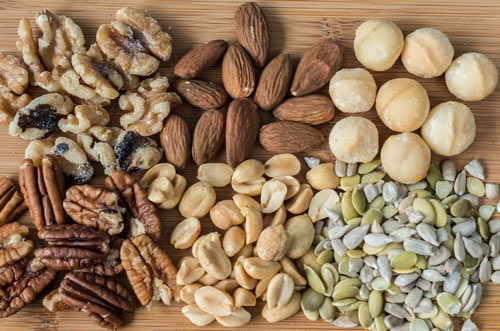Many of us are trying to get more vitamin D…for good reason.
Studies show vitamin D fights cancer, heart disease, and osteoporosis. It also boosts immunity. And most of us don’t get enough. Nearly three-quarters of Americans are deficient.1
You can get vitamin D in three different ways: exposure to sunlight, food, and supplements.
But new research shows that even if you’re getting ample vitamin D, it will be useless unless you have enough of one mineral. In fact, if you don’t have enough, vitamin D actually can be dangerous.
Vitamin D Is Dangerous Without Magnesium
A review published in The Journal of the American Osteopathic Association found vitamin D can’t be metabolized without sufficient magnesium.2 Without magnesium, vitamin D is stored and inactive. So if you take D supplements but don’t get enough magnesium, the supplements are useless.
Even worse, they can be dangerous, the study found. Withough sufficient magnesium, vitamin D can cause vascular calcification.
This is a potentially deadly condition. It’s a leading cause of death in patients with kidney problems. And it is linked to artery blockages that cause heart attacks.3 4
Dr. Mohammed S. Razzaque at the Lake Erie College of Osteopathic Medicine co-wrote the review. “People are taking vitamin D supplements, but don’t realize how it gets metabolized,” he wrote. “Without magnesium, vitamin D is not really useful or safe.”
When you have optimum magnesium levels, you require less vitamin D. That makes your bones stronger, reducing your risk of osteoporosis and bone fracture.
“By consuming an optimal amount of magnesium, one may be able to lower the risks of vitamin D deficiency, ” said Dr. Razzaque.
Deficiency in either nutrient is associated with skeletal disorders and heart disease. Doctors recommend men get 420 mg of magnesium daily. Women should get 320 mg. But half of Americans don’t get enough.
This may be because they eat processed foods. Junk foods have very little magnesium.
3 Top Foods High In Magnesium
Here are three excellent food sources for magnesium: 5
- Nuts and seeds. A quarter cup of pumpkin or squash seeds has 317 mg of magnesium. Brazil nuts offer 133, and almonds weigh in at about 100 mg.
- Fruits and vegetables. Almost all fruits and vegetables have significant amounts of magnesium. Two with concentrated amounts of the mineral include prickly pear, which offers 88 mg. Half a cup of cooked spinach provides 83 mg.
- Wild-caught, cold-water fish. A 2 ½-ounce serving of Chinook salmon has 92 mg of magnesium. Atlantic Mackerel has 73 mg.
Researchers say the magnesium content has decreased in the past few decades. They blame industrialized agriculture, which has depleted the magnesium content of the soil. That’s why the most reliable way to get the mineral may be through a supplement.6
They are widely available at health food and drug stores, and even big box retailers like Target.
There are many types of magnesium supplements. We recommend the magnesium chloride form. It is soluble in water, which makes it more bioavailable.78 Take 350 mg a day.9
One more thing… If you take vitamin D, be sure to take the D3 form. It’s far more effective than D2 or supplements that are generically labeled as “vitamin D.”
Like this Article? Forward this article here or Share on Facebook.
References:
1 https://www.ncbi.nlm.nih.gov/pubmed/21310306
2 https://www.sciencedaily.com/releases/2018/02/180226122548.htm
3 http://jasn.asnjournals.org/content/20/7/1453.full
4 https://www.ncbi.nlm.nih.gov/pmc/articles/PMC2703713/
5 https://www.dietitians.ca/Your-Health/Nutrition-A-Z/Minerals/Food-Sources-of-Magnesium.aspx
6 http://www.ancient-minerals.com/transdermal-magnesium/dietary/
7 http://www.ancient-minerals.com/transdermal-magnesium/magnesium-supplements/
8 https://bodynutrition.org/magnesium/
9 https://www.webmd.com/diet/supplement-guide-magnesium#2

